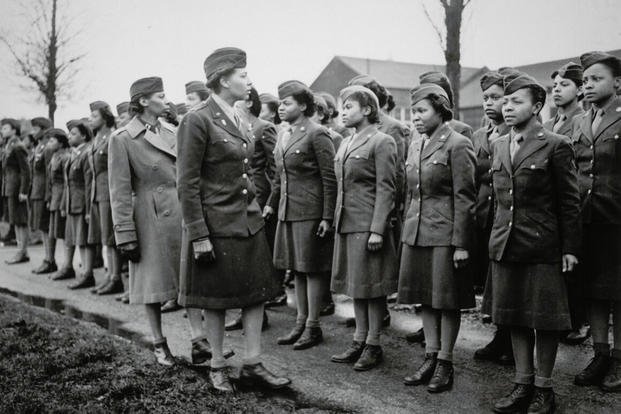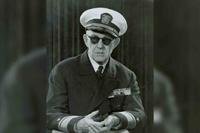On March 8, 2024, Deputy Secretary of Defense Kathleen Hicks delivered remarks from the Pentagon to commemorate International Women’s Day. Hicks, a devoted civil servant and herself one of the most senior women in the national defense establishment, noted how far women in uniform have come in the more than 75 years since their permanent integration into the U.S. armed forces while recognizing that there was still much work to be done.
“That’s why we remain focused on expanding equal opportunity and reinforcing the support that allows women in the workforce to thrive -- such as competitive pay, child care, health care and workplace safety,” Hicks stated. “There is more work to do to ensure that women and girls are given the tools and access they need to realize their full potential.”
It should come as little surprise to observers of military and defense affairs that Hicks emphasized the significance of workplace issues to the success of women in uniform. After all, the U.S. military -- and certainly the Department of Defense as a whole -- is not just a warfighting organization; it is also an employer. Workplace and personnel issues, from recruitment to pay to promotions, are often among the most pressing challenges facing senior leaders in the defense community.
This is especially the case when it comes to women in national security roles, who are often disproportionately disadvantaged by inequitable workforce policies. This trend has forced women in uniform to, willingly or not, fight for equality in the workplace since the very beginning of their integration into the armed forces.
Dismayingly, however, the contributions that servicewomen have made to the broader fight for women’s equality in the workplace has largely been erased from the narrative of women’s progress in the United States. This dissonance is best captured, perhaps surprisingly, in the story behind Ruth Bader Ginsburg’s famous declaration: “I ask no favor for my sex. All I ask of our brethren is that they take their feet off our necks.”
Some may recall that the statement in fact originates with abolitionist Sarah Grimké and was popularized by Ginsburg in her argument before the Supreme Court in 1973, two decades before she would eventually become a justice. The case, which Ginsburg helped win in an 8-1 ruling, was called Frontiero v. Richardson, and it became a landmark ruling in unraveling workplace discrimination against women. But what very few people know is who Ginsburg represented in the case: Sharron Frontiero, a married Air Force officer, who sued the Department of Defense to acquire benefits for her dependent husband that were denied based on her sex.
That few people know Frontiero’s name is, at least in part, the consequence of a more troubling tendency to leave women in uniform out of our understanding of the women’s movement of the 20th century. Listening to most people talk about women’s progress in recent decades, it would seem that many of us have simply forgotten the hundreds of thousands of American servicewomen, such as Frontiero, who fought some of the most consequential battles for women’s equality in the 20th century.
The Overlooked Vanguard
This puzzling and troubling phenomenon is nowhere more the case than when it comes to women who served in uniform during World War II. They have been virtually erased from the narrative of women’s progress in the 20th century despite often being the ultimate source of some of the most important victories of the contemporary women’s movement.
To understand the importance of this incredible group of women, it is best to start with the sheer scale of their contribution in World War II: More than 350,000 American women donned military uniforms during the war, and they did so in every service, in every theater and in most of the available military occupations at the time. They were pilots, codebreakers, ordnance experts, gunnery instructors, metalsmiths, chemists, translators, parachute riggers, truck drivers, radarmen, pigeon trainers and much more.
Even more important than the scale and scope of their contribution, however, was its impact. The work of servicewomen in World War II was at the heart of the Allied support operations that helped ensure that American forces got the training, tools and equipment that they needed, exactly when and where they needed it. Women in uniform drew the maps that Allied forces used to make their way through France and Germany, they fixed the tanks and planes that were deployed to the Pacific, and they treated injured men from the frontlines. In short, they provided the support that allowed Allied troops to win the war.
At the same time, however, many women in uniform battled sexual harassment, discrimination and even violence in the military. The behavior they endured ran the gambit from routine incidences of sexual harassment -- such as senior officers who repeatedly denied promotions to servicewomen who refused their romantic overtures -- to appalling acts of sexual assault. To their credit, the women of World War II endured this disparagement with dignity, grace and grit, which laid bare their commitment to performing their essential work in the face of demoralizing, demeaning and sometimes criminal behavior.
Those women include Ann Baumgartner, who test-flew Army Air Force planes to determine whether they were mission ready, including the B-29 Superfortress, which dropped the bomb on Hiroshima and Nagasaki. When Baumgartner wasn’t busy flying state-of-the-art planes, she was squaring off against male aviators who questioned her fitness to fly and fashioning flight suits from men’s surplus uniforms. By the end of the war, women such as Baumgartner, serving in Women Airforce Service Pilots (WASP), had accumulated more than 60 million miles in the air for the U.S. Army but were denied the full benefits of their service until 1977.
Those women include Ruth Haskell, an Army nurse who landed on the beaches of North Africa hours after the first wave of the invasion and followed the front into the Mediterranean. When Haskell wasn’t busy taking enemy sniper fire while she assisted in surgery, she was making the case for nurses to receive a full commission and equal pay to men of equivalent rank. Though the Army Nurse Corps eventually succeeded in acquiring the benefits that these nurses always deserved, for several years during the height of the war -- in a conflict that killed more than 400,000 Americans and injured hundreds of thousands more -- women such as Haskell received only partial benefits for military service.
Those women include Charity Adams, who led the 6888th Central Postal Directory Battalion and helped clear a six-month backlog of mail in the field, ensuring troops got an essential morale boost at a critical moment in the war. When Adams’ unit wasn’t busy breaking all records for sorting mail -- in a single eight-hour shift, the women could sort more than 65,000 pieces of mail, which was 2-3 times as much as the men they replaced -- she was forced to go toe to toe with white officers, male and female alike, over the segregated and demeaning policies for equipment distribution and housing while posted abroad. Adams would end the war as one of the highest-ranking women in uniform, Black or white, but she would need to wait over two years for President Harry Truman to formally end segregation in the Army.
But, even today -- when we really ought to know better -- we often fail to recognize these women for their contribution not just to the war effort, but also to the fight for equality at home. Contrary to what many might believe based on the way that we talk about the 20th-century women’s movement, the women of World War II were not absent from this period of extraordinary progress. Quite the opposite: Long before the women’s liberation movement existed, the women of World War II changed the way Americans thought about the role of females in the workplace. Quietly, diligently and persistently, the military women of WWII brought the women’s movement into the modern era.
Credit Where Credit Is Due
Given all of this, how is it that many of us know so little about the contribution of servicewomen in World War II to the decadeslong fight for women’s equality?
Part of this erasure almost certainly has to do with the ways in which women in uniform fought against the discrimination and harassment they faced during the war. While servicewomen advocated tirelessly for their gender during World War II, the reality is that the open hostility they faced often forced them to do so in inconspicuous ways and encouraged them to tread lightly when it came to women’s equality. When combined with their professed patriotic and practical motives for joining the military, as opposed to a desire to make a political statement, female WWII veterans tended to be modest about their contributions to the women’s movement. As a result, their battles are rarely etched in the annals of the U.S. military’s all-encompassing bureaucracy and, by extension, the annals of broader history.
What’s more: Most of us never asked them about it. In the absence of any questions about their service -- to the country or to their gender -- the contribution of women in uniform has all but disappeared from the public narrative about the women’s movement. Take, for instance, the female Marine Corps veteran I interviewed for my recent book on servicewomen in World War II, who was incredulous that I was interested in hearing more about her service. “Oh, my god,” she said as we began our conversation. “There are people out there who still care about me?”
This reality probably informed Sharron Frontiero’s lifelong discomfort in taking credit for the role she played in laying the legal groundwork for women’s equality. As Frontiero later pointed out, her goals were never political or symbolic, and there was nothing extraordinary about her motives when she “walked into a lawyer’s office and said, ‘I want my money.’” Plus, few people seemed to care much about the story of the woman behind the case once the victory had been won.
But even decades later, Ginsburg remembered what most of us have forgotten: Women in uniform deserve credit for the doors that they opened for all of us. This is why, at the end of one of her conversations with Frontiero, Ginsburg gave her a long, warm hug and whispered simply:
“It’s all right to be a hero.”
Lena Andrews is a military analyst at the CIA and the author of “Valiant Women: The Extraordinary American Servicewomen Who Helped Win World War II.” A Boston native, she received her Ph.D. in political science from the Massachusetts Institute of Technology, specializing in international relations and security studies. She has spent more than a decade in foreign policy, having previously worked at the Rand Corporation and United States Institute of Peace. Lena lives in Washington, D.C., with her husband and son, and is always looking for fresh takes on old stories.
Want to Know More About the Military?
Be sure to get the latest news about the U.S. military, as well as critical info about how to join and all the benefits of service. Subscribe to Military.com and receive customized updates delivered straight to your inbox.















